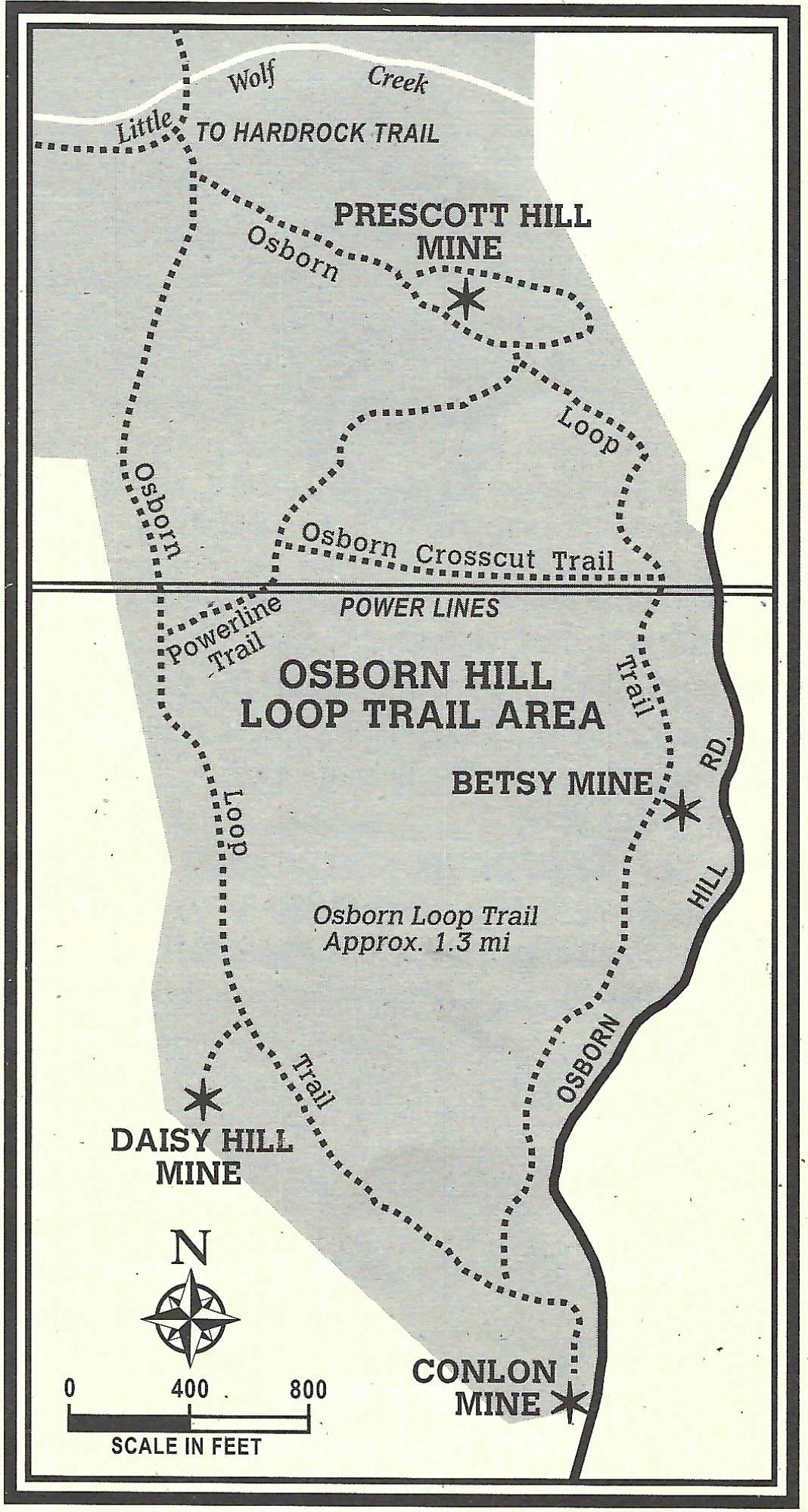Osborn Hill Loop Area

PRESCOTT HILL MINE
In the early 1860’s, the Prescott Hill Mine shaft was sunk on an incline to a depth of 300 feet. In 1906 the Sultana Gold Mining Company reopened the Prescott and sank the shaft to 1750 feet. However, very little ore was found below 750 feet.
The first large foundation supported a 20-stamp mill originally used at the Allison Ranch Mine. The Sultana Company moved the mill to this location when they reopened the Prescott.
Farther along the trail on the left is the large Prescott waste rock pile. The foundations on the right supported the 102-foot-high Prescott headframe. The main shaft was on the far side of these foundations.
BETSY MINE
The "Wheal Betsy" was a typical hardrock gold mine, named traditionally for a woman. The main shaft was sunk on an incline to a depth of 300 feet. Apparently, the Betsy produced little after 1870. The hoist and pumping works were removed before the turn of the century.
CONLON MINE
In 1894 the Conlon had a vertical shaft 105 feet deep and a tunnel 237 feet long. A steam-powered hoist, pump and 10-stamp mill were all housed under one roof. The surface works burned in 1902 and were rebuilt in 1904, with the stamp mill in a separate building. In 1904 records show that the shaft reached a depth of 730 feet. By 1908 it had become too difficult to keep the mine drained, and it was closed.
DAISY HILL MINE
Two piles of waste rock are all that remain of the Daisy Hill Mine, a small operation with two shafts and a connecting tunnel. The Daisy continued its limited operation into the twentieth century. After it closed, the North Star purchased the property to block expansion of the Empire Mine.
